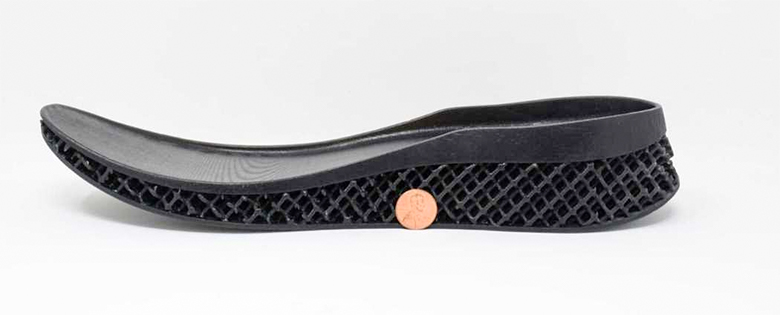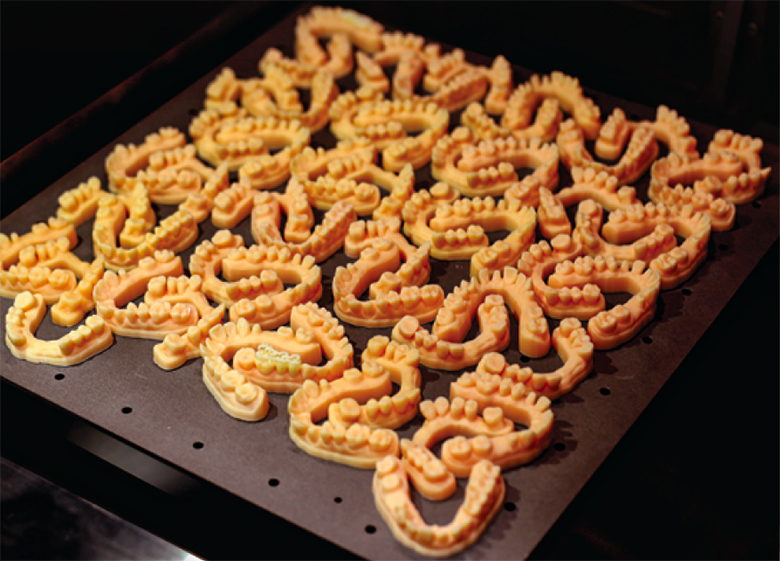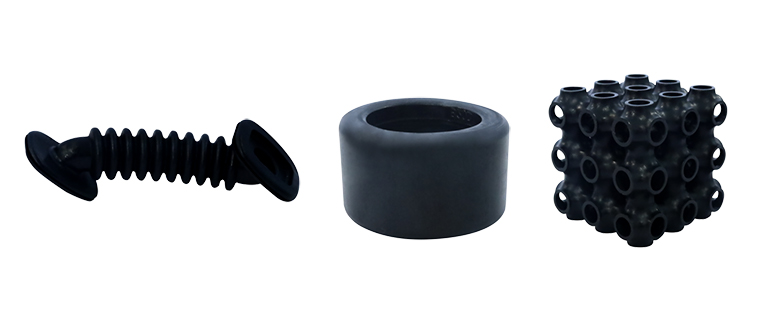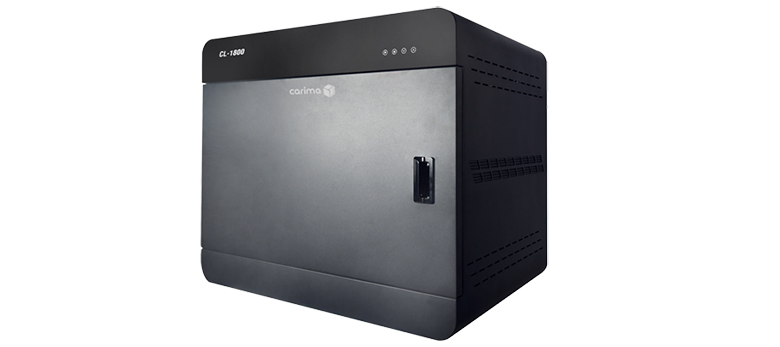South Korean 3D printer manufacturer Carima recently launched the world’s first large build volume, top-down DLP resin 3D printer, the DM400A. This printer’s innovative technology and large size, enables industrial manufacturers to directly mass-produce plastic parts.
The DM400A digital light processing (DLP) 3D printer boasts a fast printing speed and high precision, plus some unique features not found on most other industrial resin printers.
Carima’s Top-Down Approach
One example of innovation is the printer’s top-down printing method. DLP 3D printers are generally built bottom-up with the output printed upside down and drawn up out of the resin vat. This method prints small-sized output in a fine and stable method, but for large output, it has weight limits. Large, heavy prints can simply peel and dislodge from the build plate as it rises.

With the DM400A, dual 2K DLP light sources mounted on top of the equipment radiate light from the top. The digital projector screen flashes an image of a layer from the top, curing a layer at a time. The cured layer is then lowered back into the vat and the process is repeated. Each time the build plate is lowered, the recoater, mounted on top of the vat, moves back and forth over the resin to level a new layer.
Although the bottom-up method of existing DLP 3D printers is designed to tilt against gravity, the DM400A’s is built to print stabile, large-sized output just like an industrial SLA 3D printer.
The additional benefit of the top-down method is that replacing the vat film isn’t necessary. In other machines, the tilting process and repetitive printing causes tears and leaves marks on the film, but DM400A being a top-down 3D printer, no longer requires film replacements. Only the large built-in build plate needs to be cleaned, and it can be used over the long term.
In addition to the DM400A’s top-down printing method, which lowers the build panel into the resin tank at a steady rate, he printer’s large-build volume (400 x 330 x 500mm) further ensures high stability output.

Top Tech Features of the DM400A
In addition to the print method, which ensures fast and accurate prints, the DM400A also features:
- Multi Engine Technology (MET) that controls the multi-engine screen in order to print precisely on one large build size
- Dual 2K (2560 x 1600px) resolution UV Light Engine
- Overlay Synchronizing Technology (OST) that prints successful output by interpolating overlapping light
- 99% light uniformity for smooth surfaces and excellent reproducibility rate
- Loose type vat system for easy-to-change resin
- 50℃ (max) heated chamber and temperature controller for optimal high viscosity resin printing
- 11-in touch screen and user-friendly control center

DM400A as a Production Printer
Carima is no stranger to production 3D printing since its market focus has for years been the high-volume dental and jewelry industry.
Carima, which launched its first printer in 2009, is the leading printer manufacturer in Korea, and is now aggressively pursuing the European and North American 3D printer market with several distributors. In fact, with 20 resellers worldwide including the US, Japan, and Russia, Carima has contributed to the popularization and globalization of South Korean 3D printers. Carima continues to provide 3D printing total solutions, including 3D printer manufacturing, software, 3D scanning solutions, and a wide range of materials for various fields.

DM400A’s Modern Industrial Materials
Carima recently signed a contract with an AM polymer resin supplier, Adaptive3D, known for having the toughest AM elastomer on the market. It is usually difficult to print elastic material on DLP printers, but the Elastic ToughRubber 90 tested on DM400A was a success.
Elastic ToughRubber 90 is a highly elastic, high tear-resistant tough material that can be used for printing mid-soles, heel-cups, door boots, and more. For more widespread use of DM400, Additional materials for the DM400A, including Soft ToughRubber and Elastic ToughRubber 70, are currently in testing. Once tested, the Soft ToughRubber material can be used to print audio earpieces and Elastic ToughRubber 70 can print anything requiring a higher tear resistance feature.

This door boot (above) printed from Elastic ToughRubber 90 (ETR90) is an ideal case that shows the exceptional durability of ETR90. The door boot (which is installed in most car doors) gets repeatedly stretched and compressed while protecting the wire during the opening and closing of the car door. Door boots which can be precisely printed by DM400A with ETR90 have very high strength and durability, while still maintaining their flexibility, so they won’t tear or damage when repeatedly stretching and compressing. In addition, the lowest glass transition temperature is -65° C, so it retains the rubber properties of the elastomer, even in extreme frigid conditions, making it very suitable for automotive parts applications.
Furthermore, ETR can be printed with complex geometries that have fine patterns and micro-architecture, so it can produce low-density, high-strength, shock-absorbing parts with topologically-optimized design aspects applied. With the inside of parts being comprised mostly of lattice structures, functional parts with relatively low density and high strength can be additively manufactured, reducing the amount of resin used, and printing faster, thereby reducing printing costs. In addition, the DM400A can quickly print very large parts using a dual 2K light source, which increases throughput, and allows for larger single parts/batches compared to the competition.

Carima’s Large-Print Curing Solution
Carima offers the CL1800 model that can cure large prints of 520 x 450 for post curing. This product uses a powerful 1800W UV LED to cure large prints in about 10 minutes (e.g. based on Elastic ToughRubber 90).
Where to Buy
Interested buyers in the United States can contact Adaptive3D for DM400A inquiries.
Buyers from other countries can directly contact Carima Co., Ltd., for DM400A inquiries at sales@carima.com.
License: The text of "Get to Know the Carima DM400A XL Resin 3D Printer" by All3DP is licensed under a Creative Commons Attribution 4.0 International License.